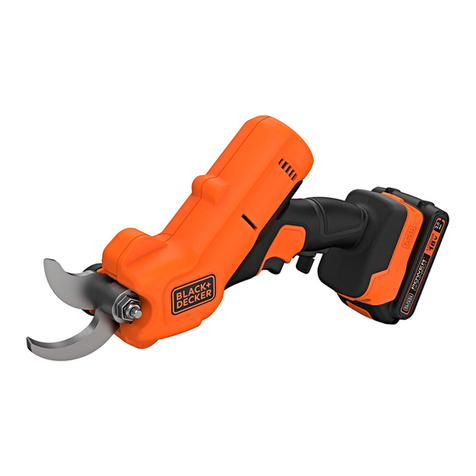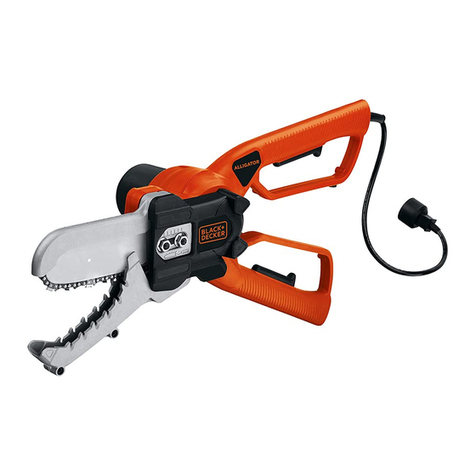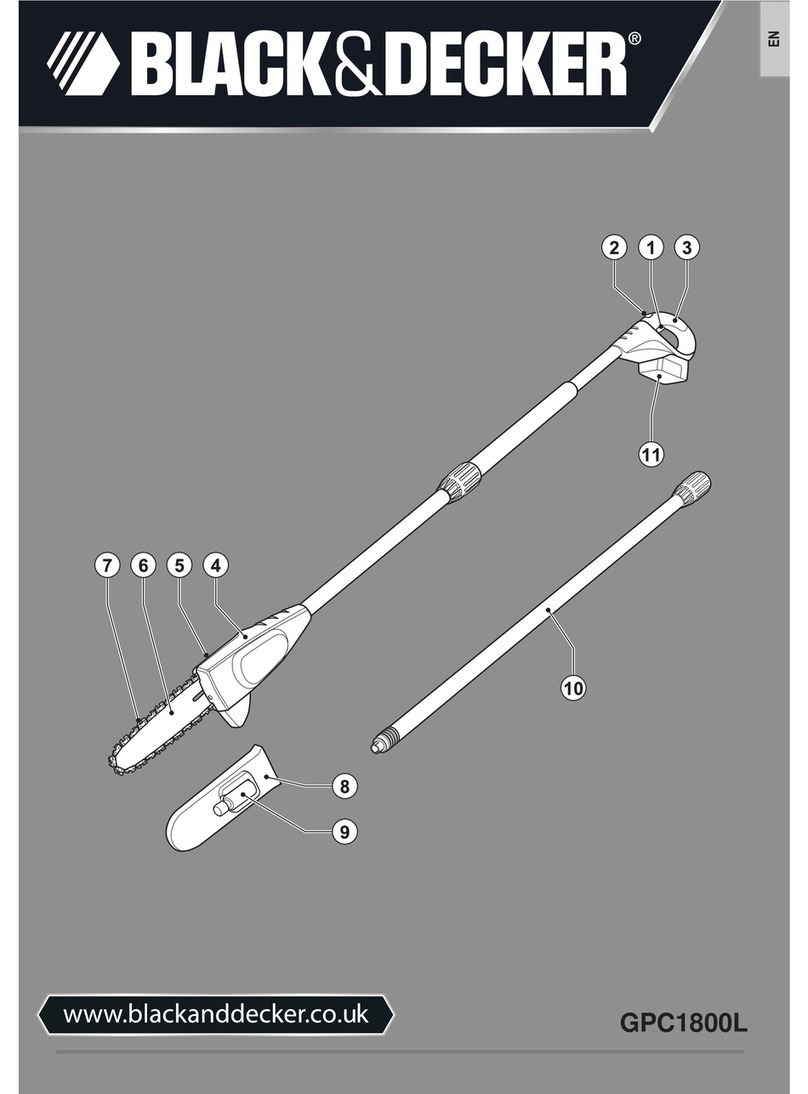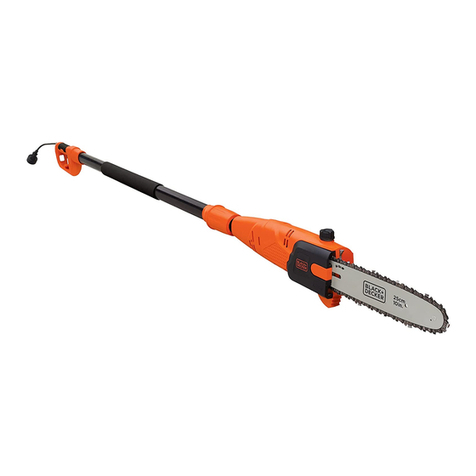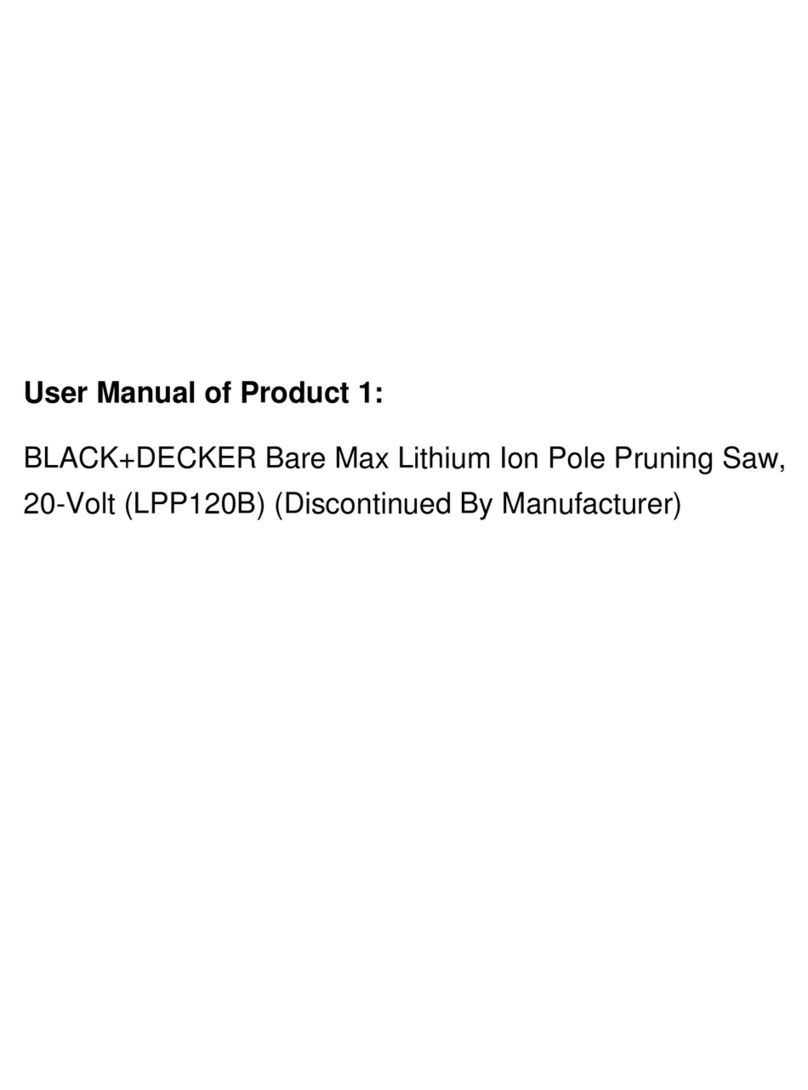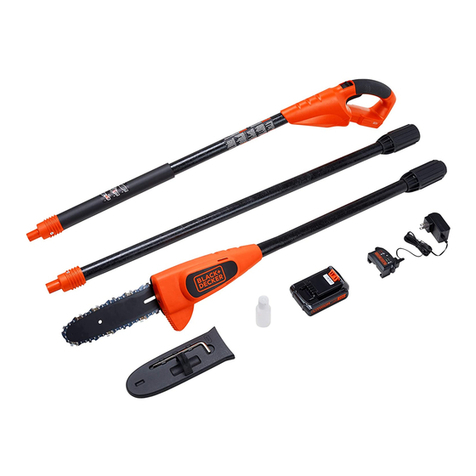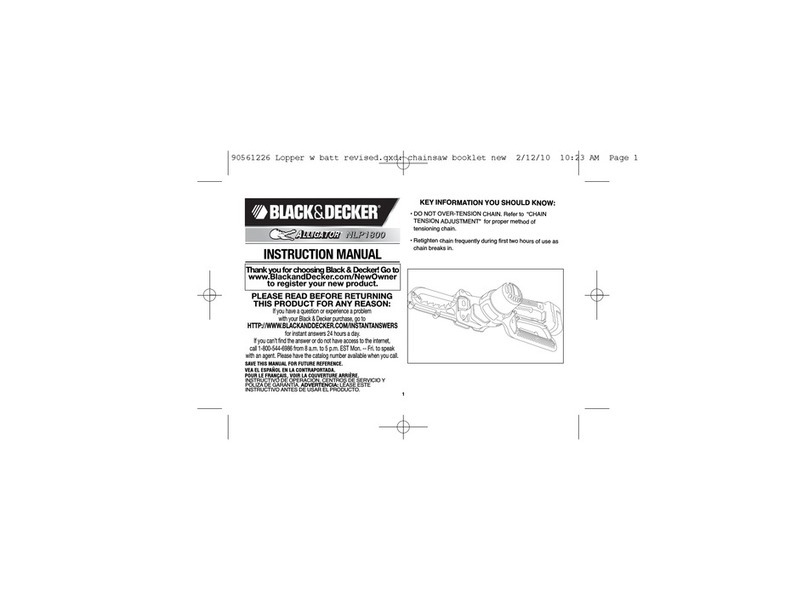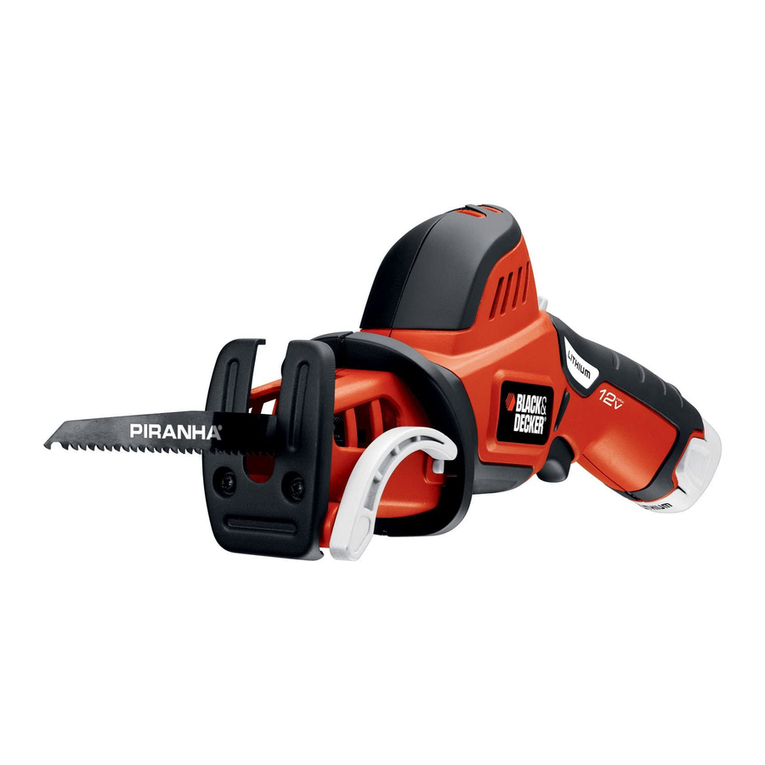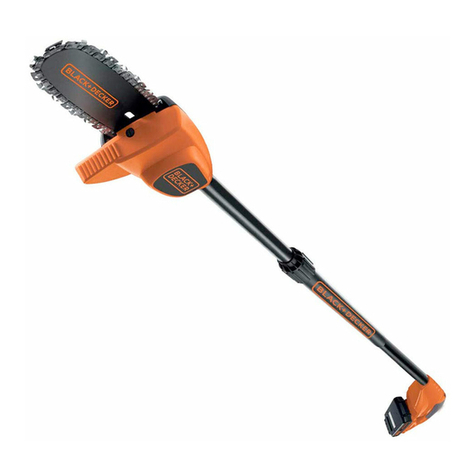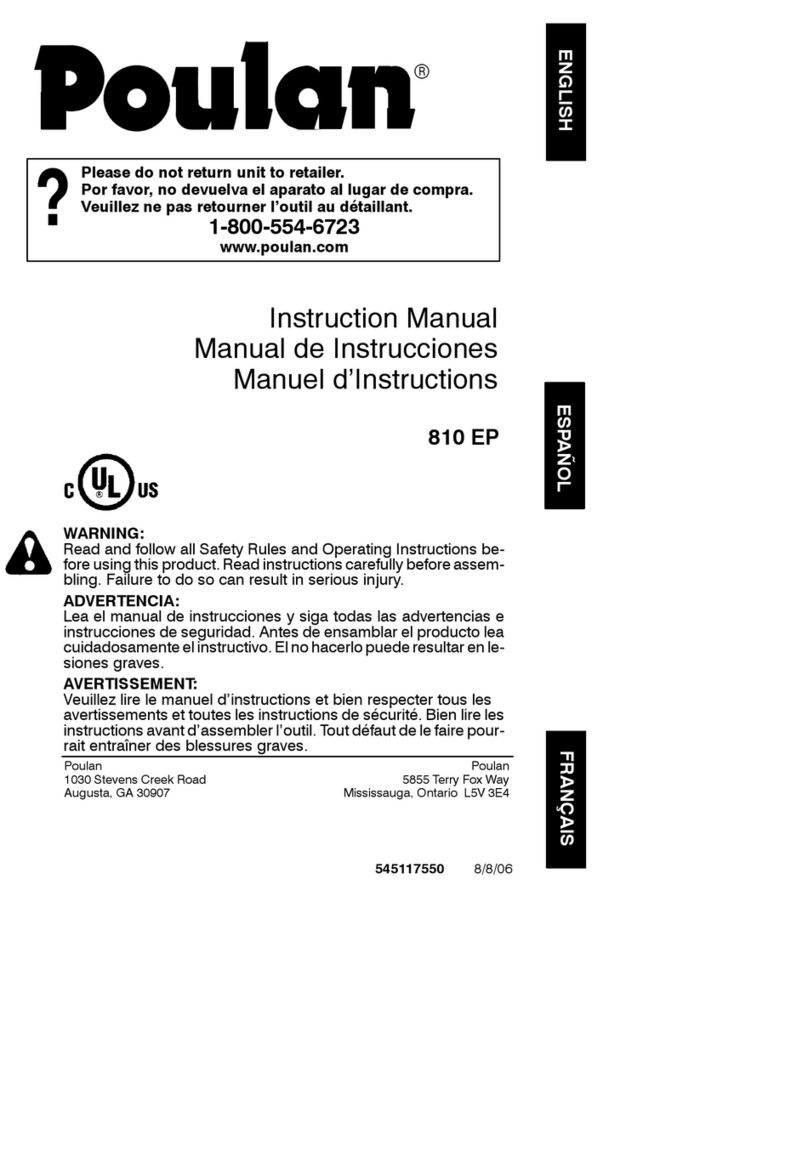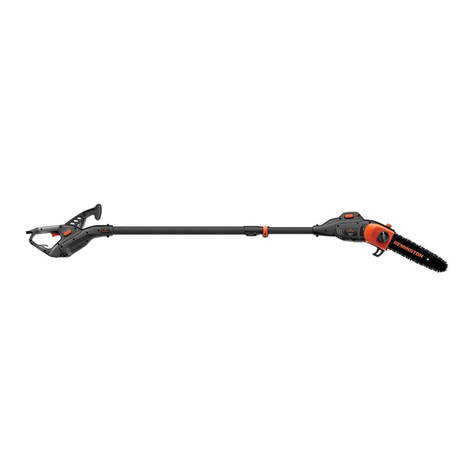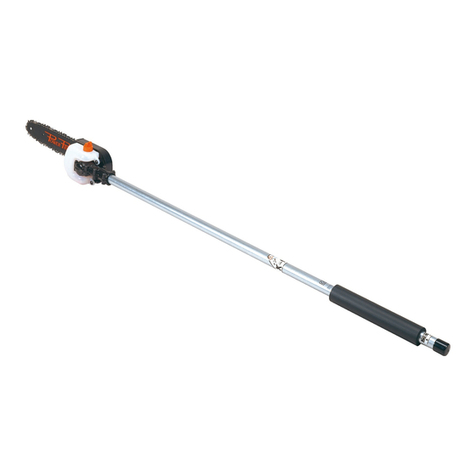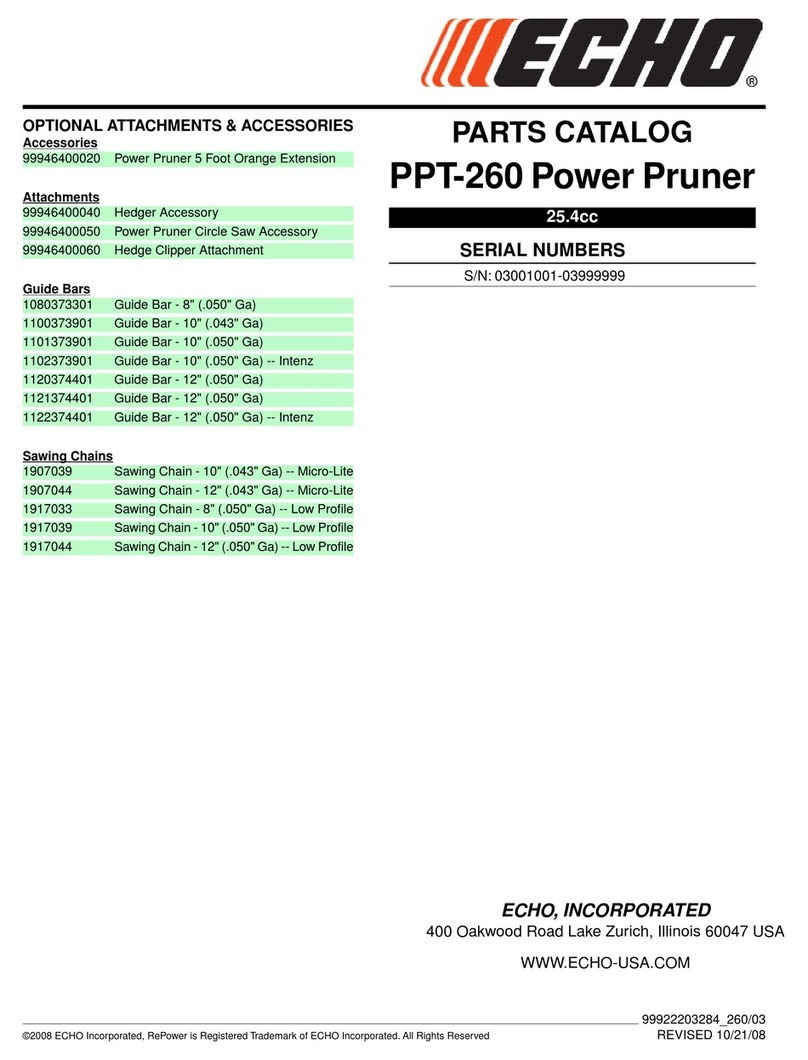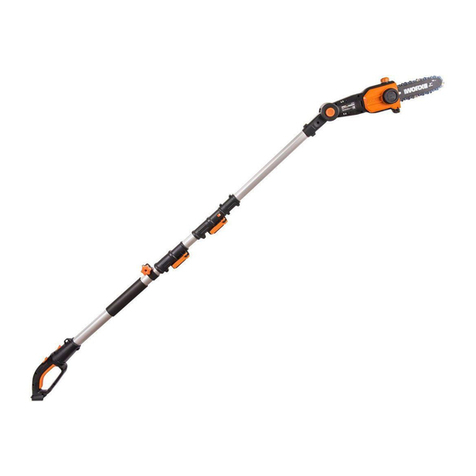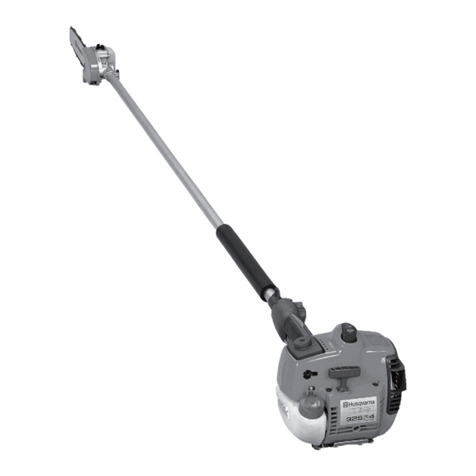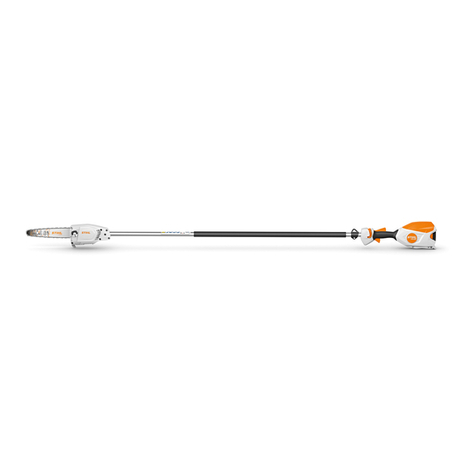3
your hair, clothing and gloves away from moving parts. Loose
clothes, jewellery or long hair can be caught in moving parts.
g. If devices are provided for the connection of dust extraction
and collection facilities, ensure these are connected and
properly used. Use of these devices can reduce dust related
hazards.
h. Maintain Appliance With Care - Keep cutting edge sharp and
clean for best performance and to reduce the risk of injury.
Follow instructions for lubricating and changing accessories. Inspect
appliance cord periodically, and if damaged, have it repaired by an
authorized service facility. Inspect extension cords periodically and
replace if damaged. Keep handles dry, clean, and free from oil and
grease.
i. Grip Saw Firmly - Hold the chain saw firmly with both hands
when the motor is running. Use a firm grip with thumbs and
fingers encircling the chain saw handles.
j. Power Supply - Connect chain saw to correct voltage, that is,
be sure that the voltage supplied is the same as that specified
on the nameplate of the tool.
4. Power tool use and care
a. Do not force the power tool. Use the correct power tool for
your application. The correct power tool will do the job better and
safer at the rate for which it was designed.
b. Do not use the power tool if the switch does not turn it on
and off. Any power tool that cannot be controlled with the switch is
dangerous and must be repaired.
c. Disconnect the plug from the power source when not in use,
before servicing, before making any adjustments, changing
accessories and attachments such as saw chain and guard or
storing power tools. Such preventive safety measures reduce the
risk of starting the power tool accidentally.
d. When not in use, appliances should be stored indoors in a
dry, and high or locked-up place, out of the reach of children
and do not allow persons unfamiliar with the power tool or
these instructions to operate the power tool. Power tools are
dangerous in the hands of untrained users.
e. Check Damaged Parts - Before further use of the appliance, a
guard or other part that is damaged should be carefully
checked to determine that it will operate properly and perform
its intended function. Check for alignment of moving parts, binding
of moving parts, breakage of parts, mounting, and any other
condition that may affect its operation. A guard or other part that is
damaged should be properly repaired or replaced by an authorized
service center unless indicated elsewhere in this manual.
f. Keep cutting tools sharp and clean. Properly maintained cutting
tools with sharp cutting edges are less likely to bind and are easier
to control.
g. Use the power tool, accessories and tool bits etc., in
accordance with these instructions and in the manner intended
for the particular type of power tool, taking into account the
working conditions and the work to be performed. Use of the
power tool for operations different from those intended could result
in a hazardous situation.
h. Do not operate a chain saw that is damaged, improperly
adjusted, or is not completely and securely assembled. Be sure that
the saw chain stops moving when the trigger is released.
i. Use extreme caution when cutting small size brush and
saplings because the slender material may catch the saw chain
and be whipped toward you or pull you off balance.
j. Carry the chain saw by the front handle with the saw stopped,
finger off the switch, the guide bar and saw chain to the rear.
k. Maintain Chain Saw With Care - Inspect chain saw cords
periodically and if damaged, have repaired by authorized
service facility. Keep cord clear of the chain and operator at all

